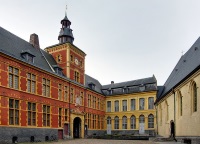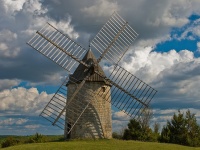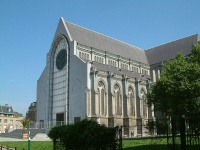
In the heart of Lille's old town stands one of the few remaining Flanders buildings, founded as a hospital in 1237 by the Countess of Flanders, Jeanne de Constantinople. It remained in service as a hospital until 1939, and today has been turned into an art museum. Works are displayed in the old hospital ward and dormitories, with their barrel-vaulted ceilings, and other halls where the community of Augustine nuns once lived and worked, providing a haven for the sick. Visitors can see the old kitchens, laundry, pharmacy, refectory and Prioresses' apartment, as well as the old chapel. The collections on display include paintings, tapestries, sculptures and porcelain from the region. The museum furnishings are mostly from the 17th century. Although some of the art in the collection is wonderful, the true fascination of the place is in imagining how life in the hospice used to be. Outside there is a delightful medicinal garden. There is a free guidebook and a great audio guide which is very informative and enriches the experience by providing history and context. The toilet is a little hard to find: it is located off the kitchen.
Address : 32 Rue de la Monnaie

Something different that appeals particularly to the mechanically minded is Lille's museum devoted to windmills. Situated on the highway to Roubaix, the Musée des Moulins boasts two preserved pivoting windmills, which visitors can watch in operation grinding corn, as well as a museum detailing the history of windmill technology. Visitors can tour the full facility, or just one or two of the sites for reduced admission if pressed for time. It is quite a fascinating place. One of the museum's aims is to preserve not only the windmills but also the industrial French heritage that they represent: the hard work, toil, endeavour and achievements of the people who made and operated them. They want to ensure that future generations can see and understand windmills, once such vital technology, and once such a common sight all over France. So far, they have restored about 45 windmills (and watermills) and are continuing with their labour of love.
Address : Rue Albert Samain, Villeneuve dAscq
Website : asso.nordnet.fr/aramnord/

A modern architectural attraction, Lille's cathedral (dedicated to the Virgin Mary) is an imposing structure, begun as a basilica in 1854 in 13th-century Gothic style. Building continued slowly, interrupted by wars and financial constraints, but finally in 1999 the lofty building was declared complete after the perfection of the unique main façade, designed by local architect Pierre-Louis Carlier in collaboration with Peter Rice, who engineered the Sydney Opera House. The central marble section supported by steel wires is an impressive sight, particularly viewed from inside or at night, when it is revealed as resembling a pink translucent veil. From the outside it appears opaque but the marble is thin enough to let in a beautiful, gentle pink glow. The church takes its name from the famous 12th-century statue of the Virgin Mary which was revered for centuries in Lille. This statue has a dramatic history and is associated with several miraculous events; it is a special part of Lille's heritage and cultural memory.
Address : 12 Rue Jean Moulin, off rue de la Monnaie
Website : www.cathedralelille.com
A striking and ornate 19th-century building which houses Lille's renowned museum of fine arts, Palais des Beaux-Arts is a masterpiece in itself. The building contains a treasure trove for art lovers, a cultural attraction second only to the Louvre in Paris. The gallery features works by Goya, Donatello, Raphael and Rubens, to name just a few of the masters represented. There are also a number of works by French artists, including three major items: Belisarius Asking for Almsby David; After Dinner at Ornansby Courbet; and Sleepby Puvis de Chavannes. Although the museum contains mainly paintings, there are also some collections of ceramics, relief maps and a large section of Italian and French drawings. The museum aims to be inter-disciplinary and therefore includes literature, theatre, music, dance and cinema in its exhibitions and organises events to celebrate all these art forms. Many visitors complain that although the museum is astounding and well worth a visit it is a little hard to find; a good tourist map is very useful in Lille.
Address : Place de la République
Website : www.pba-lille.fr

Travel Guide powered by Word Travels, copyright © 2023 Globe Media Ltd. By its very nature information in this travel guide is subject to change at short notice and travellers are urged to verify information on which they're relying with the relevant authorities. Neither Globe Media Ltd nor Travel Vogue can accept any responsibility for any loss or inconvenience to any person as a result of information contained above.